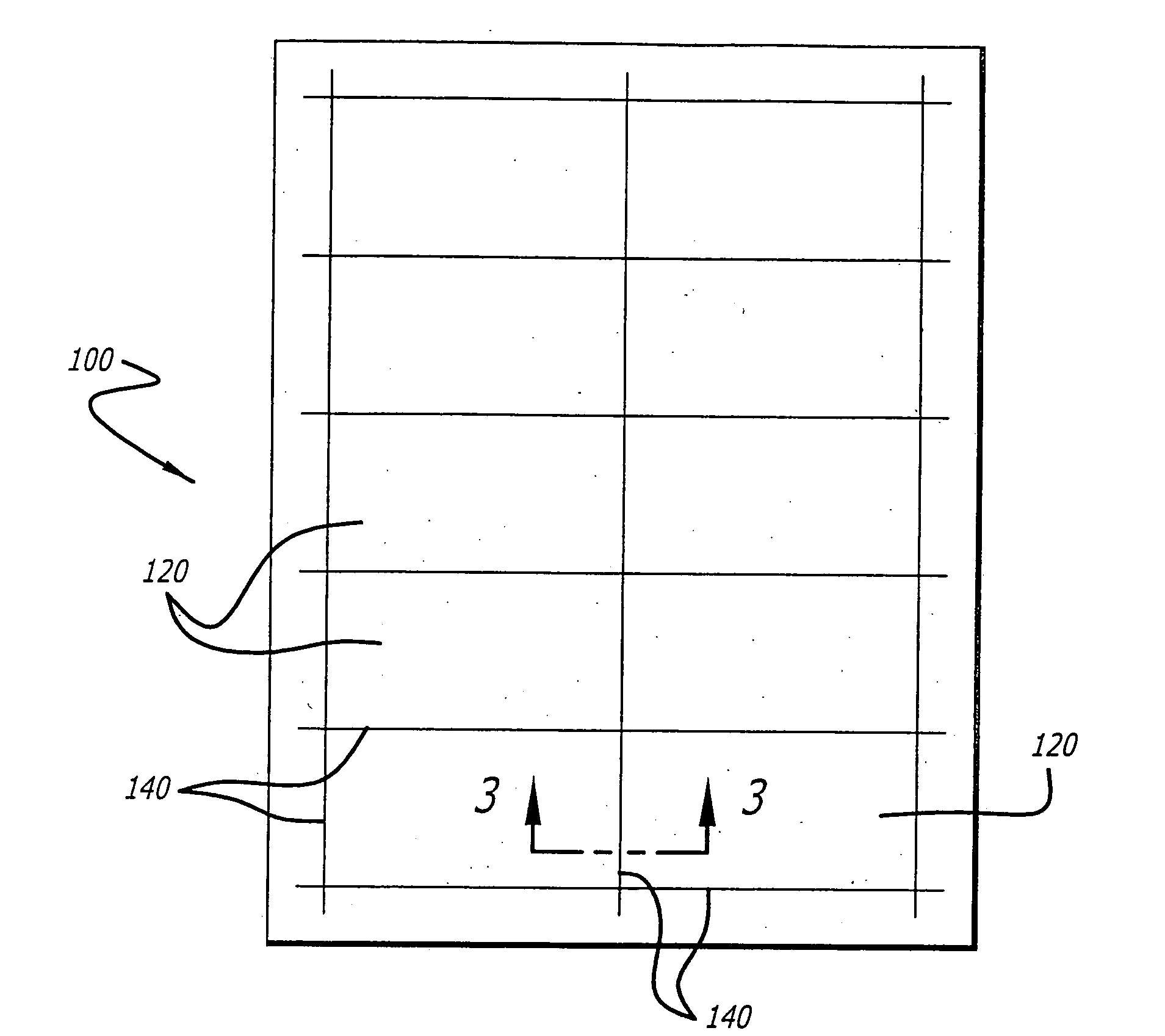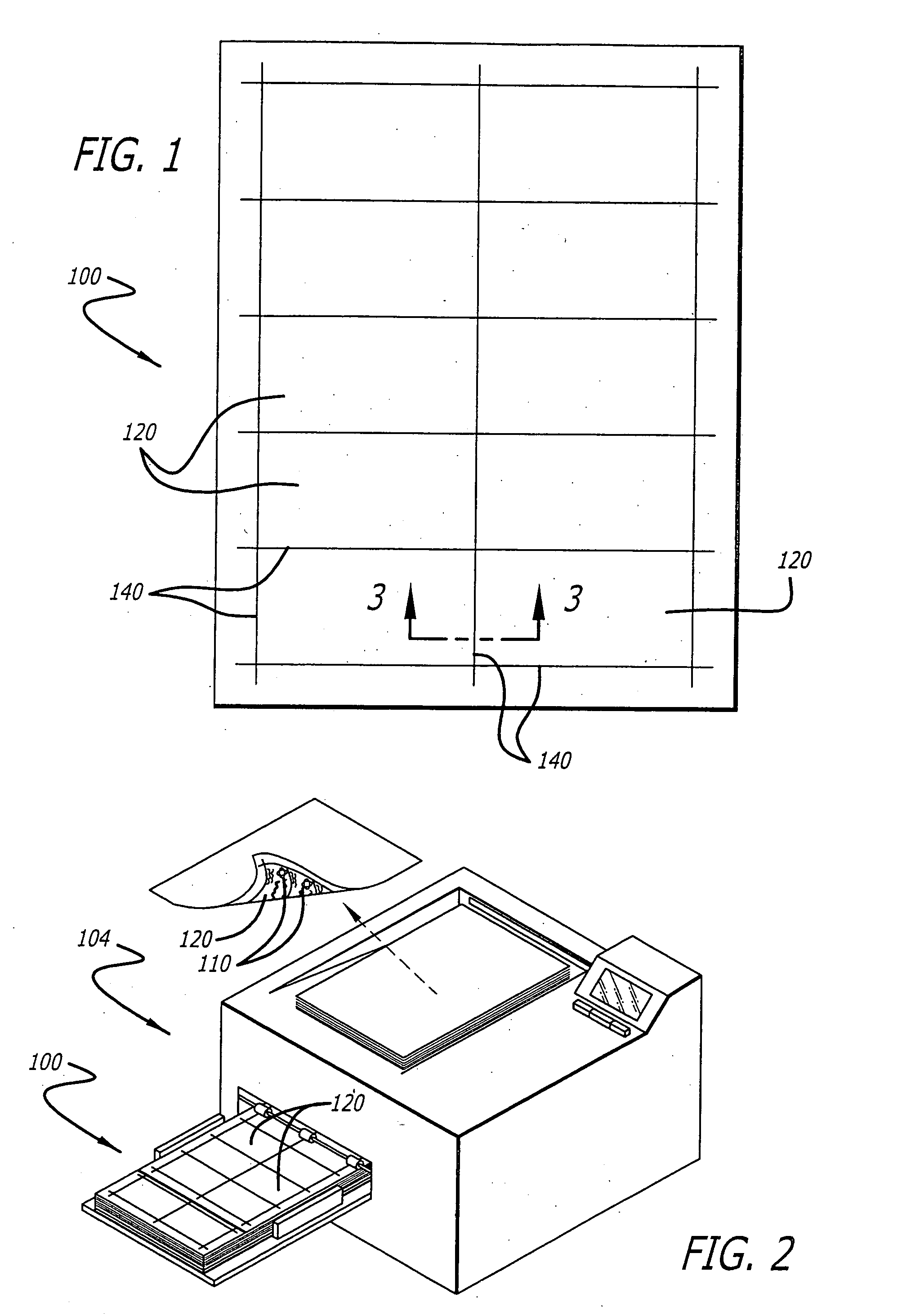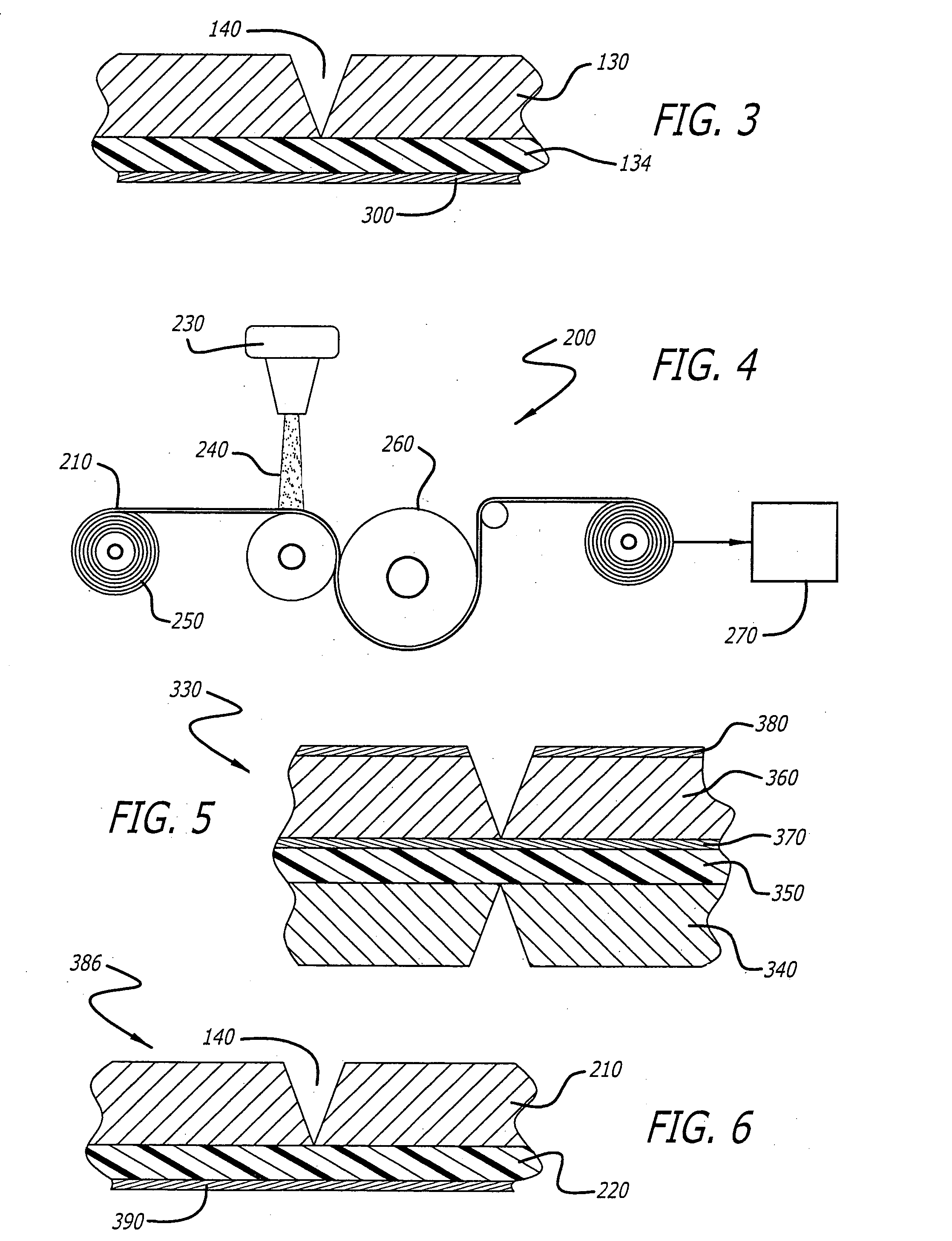Card sheet construction
a card and construction technology, applied in the field of cards, can solve the problems of unsightly residual material after card separation, inability to individually print with conventional laser or ink-jet printers, and small-scale printable media such as calling or business cards, and achieve the effects of low rigidity, high rigidity, and high quality products
- Summary
- Abstract
- Description
- Claims
- Application Information
AI Technical Summary
Benefits of technology
Problems solved by technology
Method used
Image
Examples
example 1
[0060] Polymethyl pentene (TPX) with a coating weight of twenty g / m2 is extruded onto the reverse side of an A4 sheet consisting of 185 g / m2 ivory board, which is suited to be printed with a laser printer and an inkjet printer. The sheet is punched on the front side in two rows of five calling or business cards each. The card is broken out by bending it towards the top material. The mechanical properties of the polymer polymethyl pentene used are listed in the Table below.
example 2
[0061] TPX with a coating weight of twenty g / m2 is extruded onto the reverse side of an A4 sheet consisting of 200 g / m2 glossy castcoated paper for inkjet photo prints. The reverse side of the sheet (the side onto which the polymer is extruded) is as smooth as the front side. The sheet is punched on the front side. The card is broken out by bending it towards the top material. The mechanical properties of the polymer polymethyl pentene used are listed in the Table.
example 3
[0062] TPX with a coating weight of twenty g / m is extruded onto the reverse side of an A4 sheet consisting of 185 g / m2 ivory board, which is suitable for laser and ink-jet printers. The sheet is punched on the front side in two rows of five calling or business cards each. A further coating of the film with an inkjet coating on the reverse side of the card material allows printing also on the reverse side, so that a calling card may be individually produced that may be printed on both sides. The card is broken out by bending it towards the top material. The mechanical properties of the polymer polymethyl pentene used are listed in the Table.
PUM
| Property | Measurement | Unit |
|---|---|---|
| elongation properties | aaaaa | aaaaa |
| elongation at break | aaaaa | aaaaa |
| elongation at break | aaaaa | aaaaa |
Abstract
Description
Claims
Application Information
 Login to View More
Login to View More - R&D
- Intellectual Property
- Life Sciences
- Materials
- Tech Scout
- Unparalleled Data Quality
- Higher Quality Content
- 60% Fewer Hallucinations
Browse by: Latest US Patents, China's latest patents, Technical Efficacy Thesaurus, Application Domain, Technology Topic, Popular Technical Reports.
© 2025 PatSnap. All rights reserved.Legal|Privacy policy|Modern Slavery Act Transparency Statement|Sitemap|About US| Contact US: help@patsnap.com



